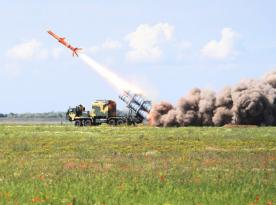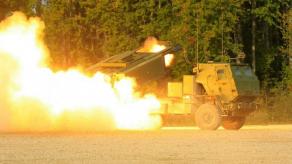Experience of recent conflicts, both initiated and sponsored by Russia in Ukraine and currently ongoing in Syria, Iraq, Libya and many other locations, reveals the extensive presence and use of unmanned aerial vehicles (UAVs) of various types and uses in local and hybrid wars in modern warfare. To counter the use of some of hostile UAV capabilities, the Ukrainian company "InterProInvest", which gained renown for developing the special-purpose automatic rifle "Volcano" (otherwise known as “Malyuk” in the commercial and export markets), has developed and offers a reliable, small-dimension, and ergonomic countermeasure, the RIFF.
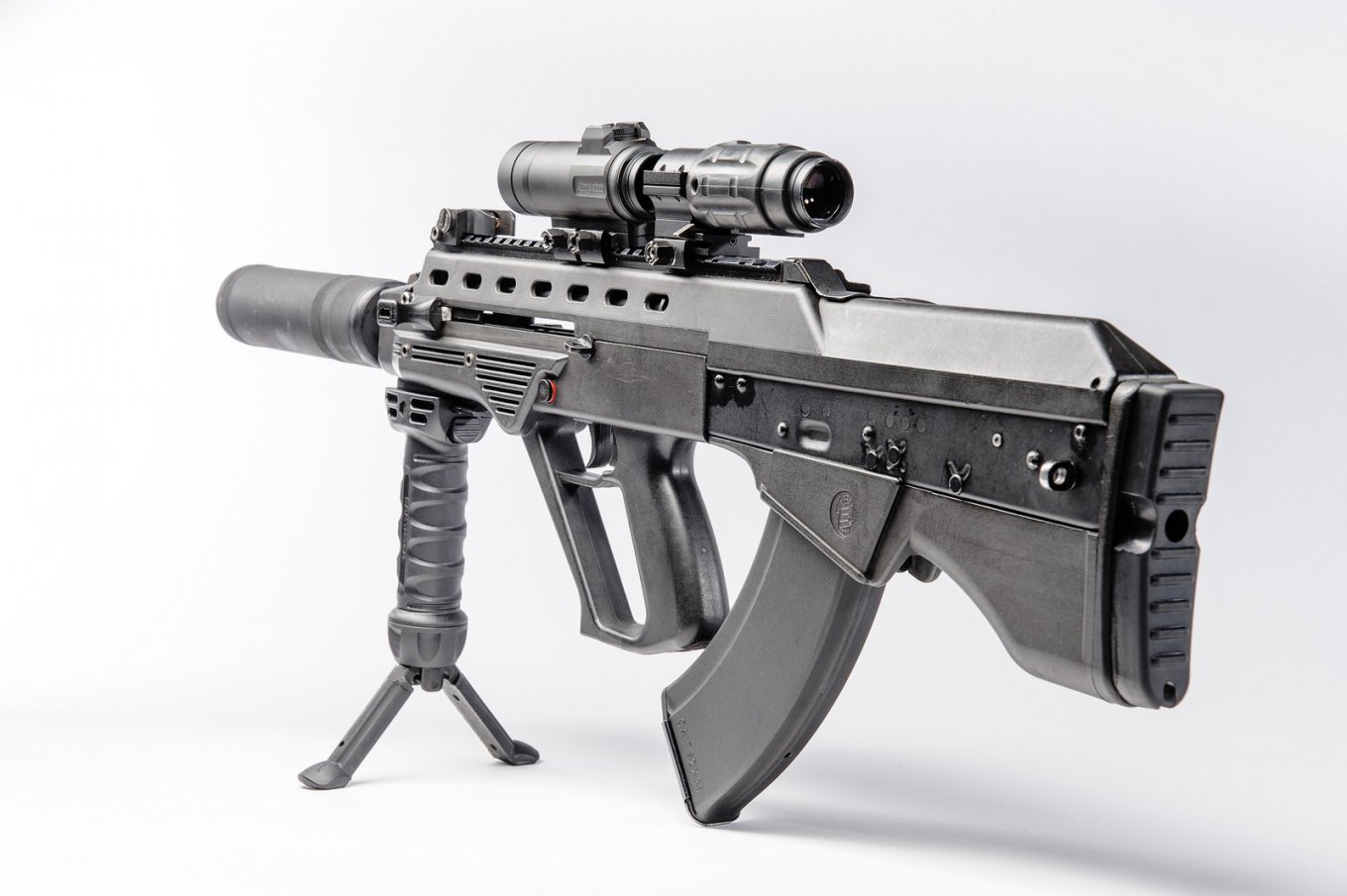
Countering the Threat from the Air
Despite the significant progress reached in development of high-tech UAV technologies for special uses, inclusive of battlefield reconnaissance and air-to-ground attacks, few militaries can actually afford having high-end UAVs in their inventories. This holds true especially for various paramilitary forces involved in armed conflicts. That being said, parties to military conflicts often have to use the simplest mass produced, cheap models of UAVs. In battlefields, UAVs are usually limited to roles such as intelligence/surveillance/reconnaissance, target identification/position location, adjustment of artillery fire, and air-to-ground attacks.
Read more: ‘ALDER’ that can launch deadly rockets
In the civilian domain, such devices, in addition to the risk of being used for terrorist attacks on civilian infrastructures and individuals, can potentially pose a significant threat to society due to their affordability and unpredictability of use.
All of this highlights the need for guaranteed detection and neutralization of these devices. Military and law enforcement customers are requiring simple, reliable and easy-to-use means in order to be able to counter current threats from the air effectively and efficiently.
In addition to this, however, there is a need for cost-effectiveness, meaning anti-UAV technologies should be designed such as to offer the optimum in terms of performance versus cost. This is important especially in light of the need to avoid occurrences of million-dollar missiles being used against low-end targets valued at several dozen thousand dollars or less, which could have been struck by far less sophisticated and less costly weapons.
For example, according to statistics by the Russian Ministry of Defense for 2018 to 2019, Russian forces in Syria shot down 120 hostile drones (53 in 2019 and about 70 in 2018) that were bound to attack the Russian airbase Hmeimim. While few details have been made public, information leaked to the media suggests that Russia’s Pantsir-S air defense missiles were used to engage and destroy most of these targets, such as an "unidentified UAV” that was reported shot down while bound from the Mediterranean Sea to the Russian airbase Hmeimim in early February 2020.
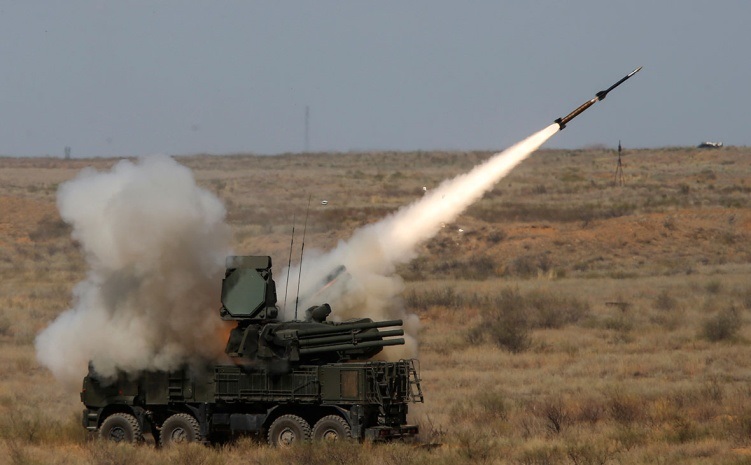
If we take into account that ‘cottage-industry made” loitering munition drones or cheap Chinese-produced drones costing (with weapons payload) a maximum of several dozen thousand dollars are most frequently used against Russian targets in Syria, and these drones are engaged and destroyed primarily with missiles valued at hundred thousand dollars (and this not inclusive of million-dollar launcher systems), this method of countering drone threats is less than efficient.
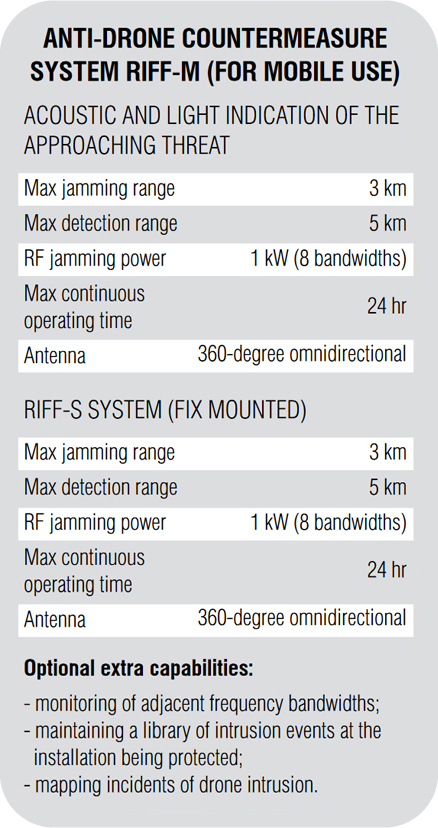
When it comes to countering mass-produced (primarily multi-rotor) drones employed for military or criminal activities, modern man-portable countermeasures - the so-called anti-drone jamming guns – are most effective, both in terms of cost and performance. These are electronic countermeasures designed to immobilize a target drone by jamming its remote control and GPS datalinks. In terms of cost, anti-drone jamming guns compare well with the targets they are designed to defeat. In some cases, anti-drone shotguns can be employed with great effect against low-end military drones of glider-type, as exemplified by InterProInvest’s RIFF-P anti-drone gun system.
RIFF provides a Safety Umbrella against Drone Attacks
As a result of close cooperation with users of the special-purpose automatic rifle "Volcano" – especially Intelligence/surveillance/reconnaissance and special operations units operationally deployed in eastern Ukraine, InterProInvest reached the conclusion that, in the Donbas Theater, one of the most dangerous threats facing warfighters at the tactical edge comes from unmanned aerial vehicles.
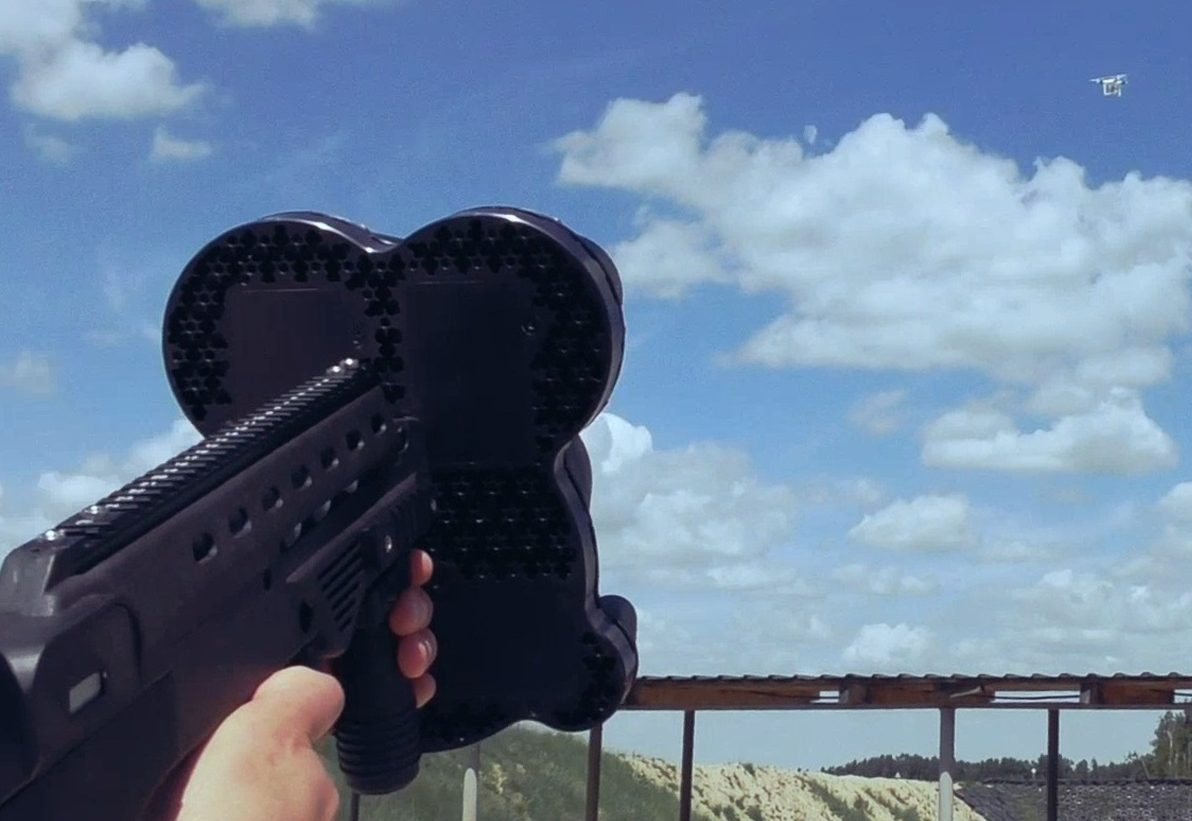
These are Russian-produced UAVs such as Aileron, Zastava, Orlan, and Forpost, just to name a few, which have supported the operations of Russia’s 1st and 2nd Army Corpses, the 8th Army, in this part of Ukraine, as well as less expensive, mass-produced commercial vehicles such as DJI Mavic, Inspire, and Phantom among others, or makeshift rotorcraft assembled from COTS components.
So the Company reviewed its available competencies and resources, and recruited the necessary staff. At the 2019 Arms & Security Trade Show held in Kyiv, InterProInvest unveiled the first release of its anti-drone jamming gun system RIFF-P. It’s worth of note that the exhibited specimen was a working prototype that the Company used for purposes of technology maturation and for investigating potential customer demand. By late 2020, the RIFF technology had been sufficiently matured to meet the requirements of military and security customers, to have its planned specifications tested and verified, and to be adopted into service by the Ukrainian army. The electrical and electronic components of the gun have ingress protection certified to IP67.
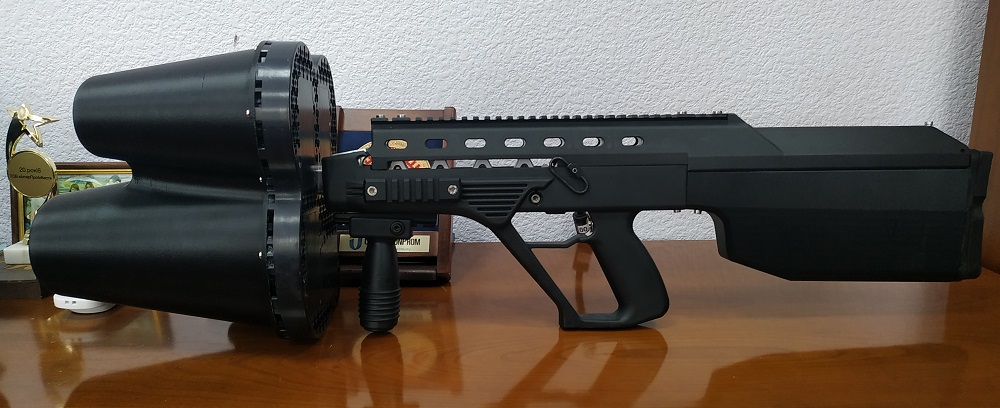
The RIFF-P is specifically designed to defeat rotary-wing drones and flying/fixed-wing UAVs. A one-button-press-system enabling easy and rapid deployment, the RIFF-P jammer works by disrupting the connection between the target drone and its pilot’s controls and by jamming GNSS (GPS/GLONASS/Galileo/Beidou) signals.
The system is a shoulder mounted jammer with a directional antenna that covers a 20-degree sector, emitting 100-W RF jamming power on four bandwidths. It can disrupt GNSS signals and jam UAV remote control signals and video signals at ranges over 1.5 km or longer.
The weapon has enough power to run continuously for 1 hour (or longer with additional rechargeable batteries).
Weighing just 4.8 kg, which is less than its closest rivals, the RIFF-P is portable and usable by one person without assistance and can be carried along with soldier’s personal firearms. In the battlefield, the RIFF-P is a perfect pair to the automatic rifle Volcano.

Some special operations units have already evaluated technical and combat capabilities of the RIFF-P shotgun in actual battlefield situations. InterProInvest claims that with such assets at hand (at the rate of one RIFF-P shotgun per platoon-size team), forces deployed downrange on the battlefield in eastern Ukraine could be far more effective and efficient in countering hostile drone attacks, and, more importantly, this would help reduce soldier casualties. The weapon could also be of use to checkpoint personnel securing critical military infrastructure, military bases, and materials/ammunition depots among many more other targets.
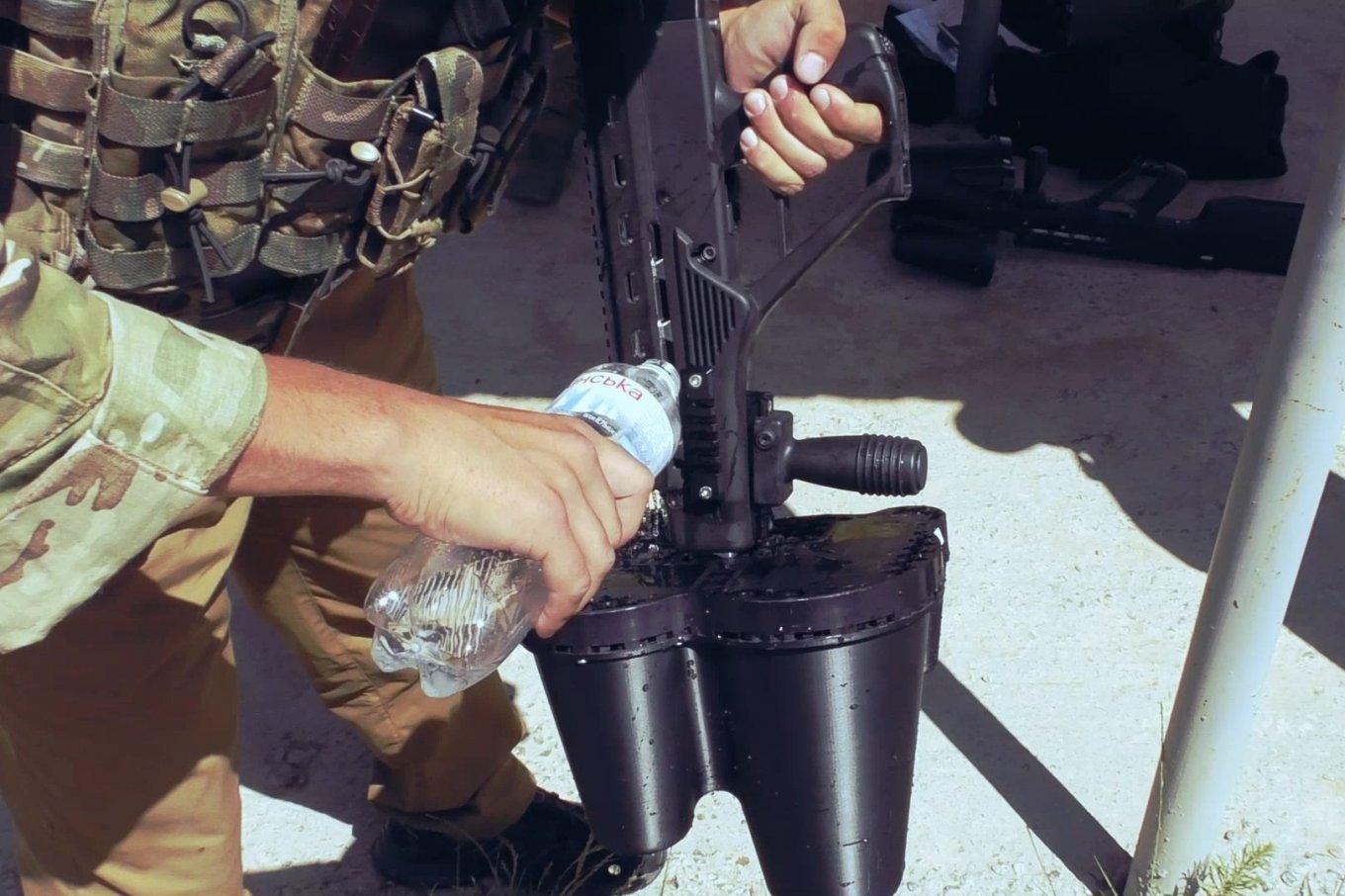
The Company, also, points to the RIFF-P technology being effectively employed in the prevention of smuggling from and to Ukraine. With this technology available to border security guards, this could facilitate them in fulfilling their mandated tasks regarding the protection of border security and interdiction of border violations involving the use of unmanned aerial vehicles.
The shoulder-mounted anti-drone jammer RIFF-P could also have utility for maintaining public order and security and for VIP security protection. It, therefore, can be used by law enforcement and private security personnel in missions involving a high risk of aerial attacks.
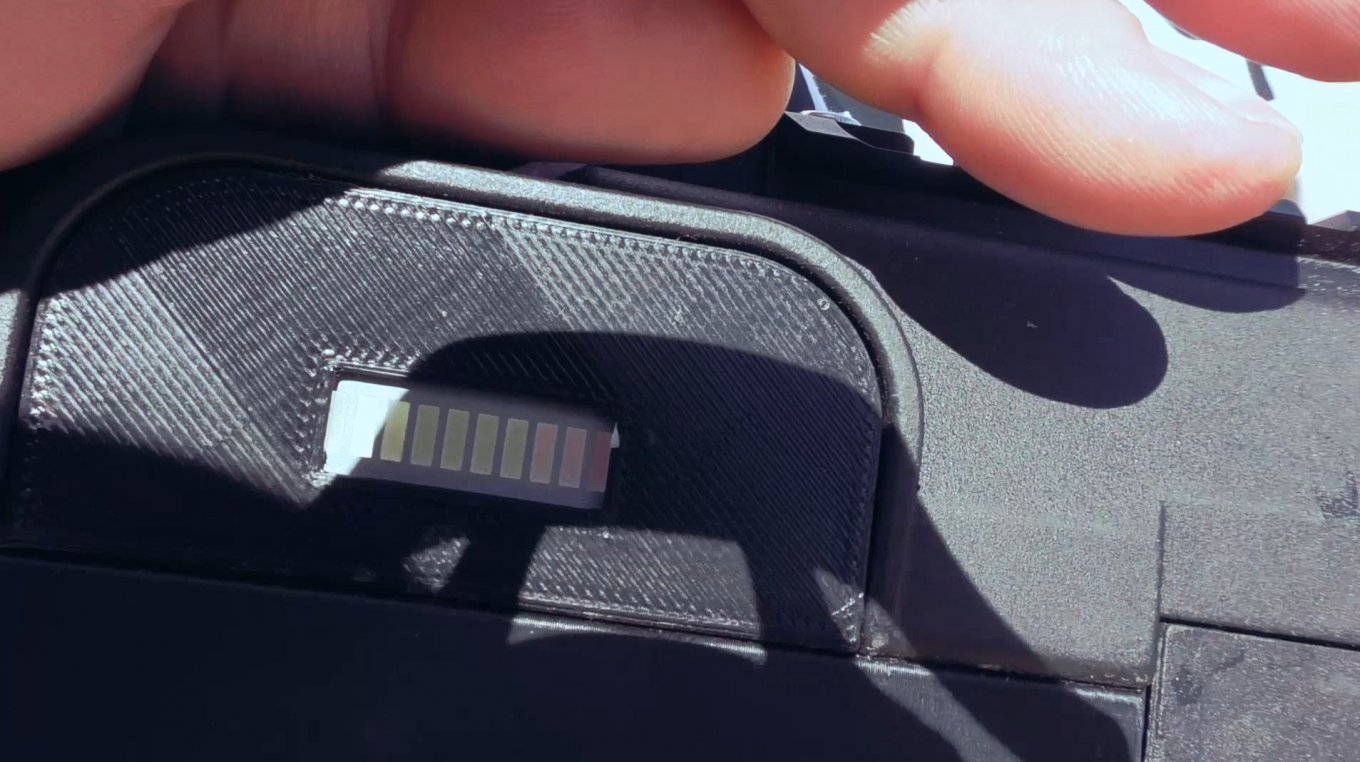
Security, Security and Still More Security
Encouraged by the success of its portable anti-drone jamming technology, InterProInvest has expanded its RIFF family of anti-drone jammers by adding the RIFF-S and RIFF-M systems optimized for fixed and mobile uses, respectively, and these technologies boast broader-range and higher specifications and capabilities.
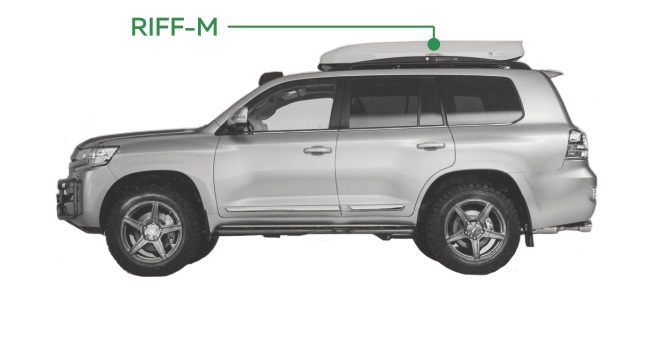
The mobile variant, RIFF-M has a compact size and can be integrated aboard lightweight utility and special-purpose vehicles. It can detect hostile UAVs at substantially long ranges from the object being protected and offers acoustic and light indication of the approaching threat. Equipped with an omnidirectional antenna, the RIFF-M can detect low-RCS UAV targets at distances up to 5 km while simultaneously calculating the launch trajectory of the target. It can interfere and frustrate control of a drone threat at ranges up to 3 km, using either directional (RF jamming power of 1 kW emitted over one of eight bandwidths) or omnidirectional (360 degree jamming) mode of operation. The RIFF-M can work continuously for 24 hours, which makes it a perfect solution both for securing vital facilities at times as needed and providing security coverage for individual persons and vehicle convoys on the move. In the latter case, the system can detect and disable a drone threat while travelling at speeds up to 100 km/h.
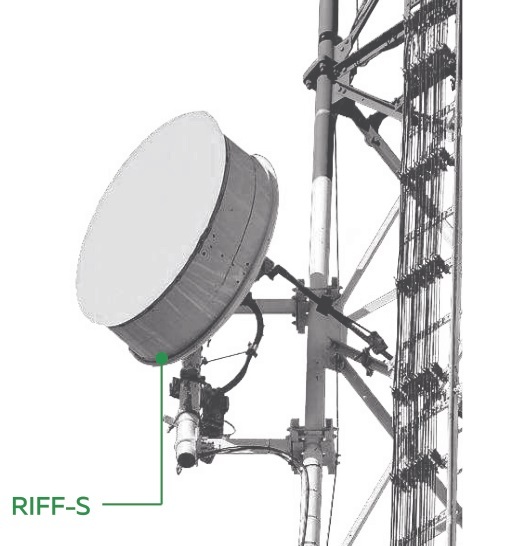
The drone countermeasure system RIFF-M, which is optimized for fixed uses, has similar specs to the RIFF-S, but comes with optional extras to adapt for specific needs such as:
- monitoring of adjacent frequency bandwidths;
- maintaining a library of intrusion events at the installation being protected;
- mapping incidents of drone intrusion.
More capabilities can be added to meet specific customer needs.
Endnote
Despite all of the suffering and losses inflicted to Ukraine as a result of Russia’s military incursion, the country has received a benefit in the form of knowledge and skills on fighting potential Russian threats and saw the rapid development of the capabilities that are so urgently required in the modern battlefield. One of the domains where Ukrainian industries have been particularly successful is anti-drone warfare, and the Ukrainian company InterProInvest is already here to help those facing threats from hostile drones by offering technology solutions based on its RIFF family of anti-drone countermeasures. If, of course, those are friends, not enemies…
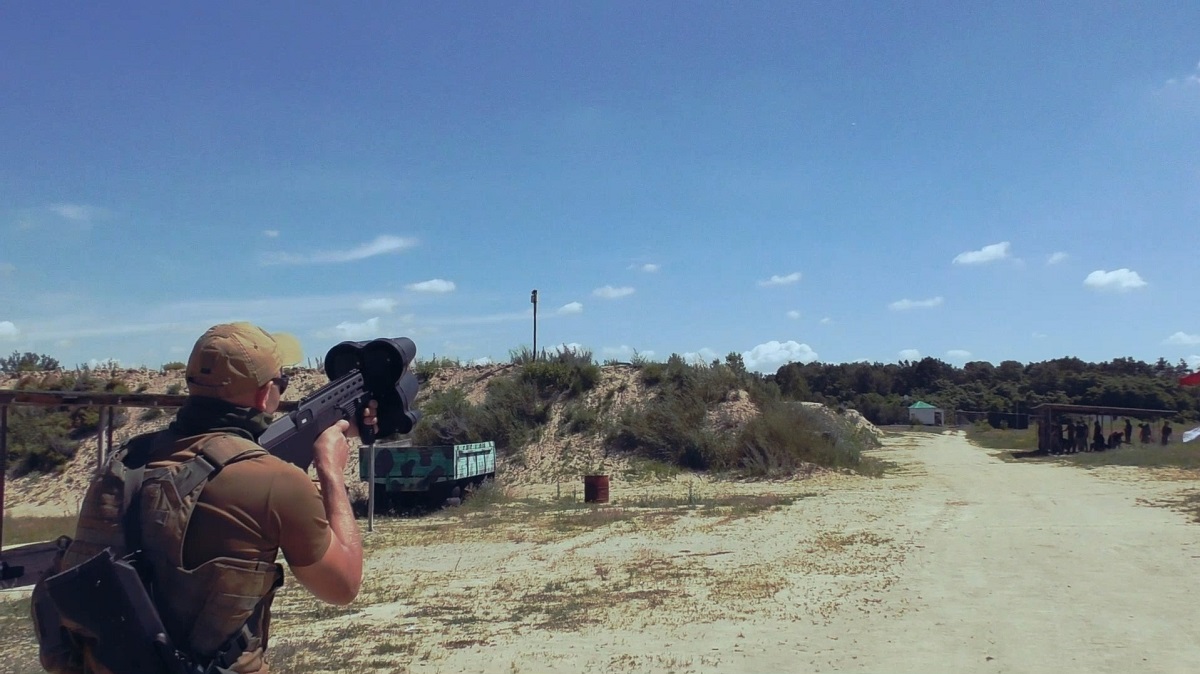
Read more: Postman ballistic processor and other solutions from Turingismus





